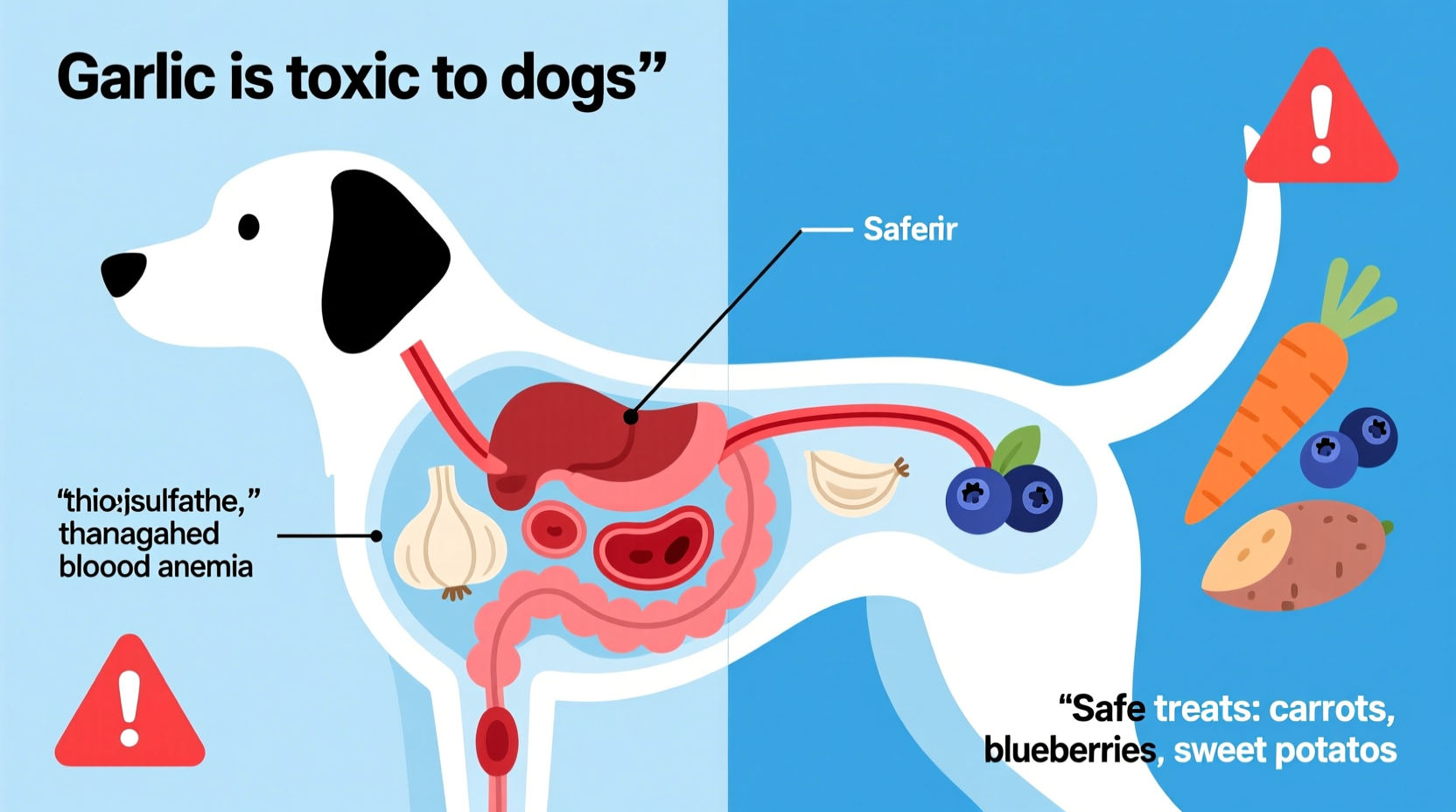As a pet owner, discovering your dog might have eaten garlic can trigger immediate panic. Understanding the real risks and knowing exactly what to do could save your dog's life. This article delivers vet-confirmed facts about garlic toxicity in dogs, including how much constitutes danger, recognizable symptoms, and critical steps to take if exposure occurs.
Why Garlic Poses Serious Danger to Dogs
Garlic belongs to the Allium family (which includes onions, leeks, and chives), containing N-propyl disulfide and other sulfur compounds that oxidize hemoglobin in red blood cells. This damage causes hemolysis—rupturing of red blood cells—which leads to hemolytic anemia. Unlike humans, dogs lack sufficient enzymes to process these compounds safely.
The ASPCA Animal Poison Control Center confirms garlic is five times more toxic to dogs than onions. Japanese breeds like Shiba Inus and Akitas show heightened sensitivity due to genetic factors affecting red blood cell structure.
| Garlic Form | Approximate Toxic Dose for 20lb Dog | Health Impact |
|---|---|---|
| Fresh garlic cloves | 1-2 cloves | Mild toxicity (vomiting, diarrhea) |
| Garlic powder | 1/2 teaspoon | Moderate toxicity (lethargy, pale gums) |
| Garlic supplements | 1 capsule | Severe toxicity (collapse, dark urine) |
Symptom Timeline: What Happens After Garlic Ingestion
Garlic toxicity symptoms don't appear immediately. Understanding this progression timeline helps owners recognize developing danger:
- 0-24 hours: No visible symptoms (but cellular damage is occurring)
- 24-48 hours: Vomiting, diarrhea, abdominal pain, lethargy
- 4-7 days: Pale gums, rapid breathing, weakness, jaundice (yellowing)
- 7+ days: Dark urine (hemoglobinuria), collapse, organ failure
The Merck Veterinary Manual documents cases where dogs developed severe anemia after consuming garlic-containing human foods over several days. Many commercial "natural" flea prevention products falsely claim garlic benefits—these pose significant risks according to the American Veterinary Medical Association.
Immediate Actions If Your Dog Ate Garlic
Time is critical when addressing garlic exposure. Follow these vet-recommended steps:
- Calculate exposure amount: Weigh any remaining garlic or check product labels for garlic content
- Contact animal poison control: Call ASPCA Animal Poison Control (888-426-4435) or Pet Poison Helpline (855-764-7661)
- Do NOT induce vomiting without professional guidance—this can worsen damage
- Collect evidence: Save packaging, take photos of consumed material
- Seek emergency care if showing symptoms like weakness or pale gums
Veterinarians may administer activated charcoal, provide IV fluids, and conduct blood tests to monitor red blood cell counts. Severe cases might require blood transfusions—the Veterinary Information Network reports increasing cases requiring transfusions due to garlic toxicity.
Preventing Garlic Exposure: Practical Safety Measures
Many dog owners unknowingly expose pets through common household items:
- Check ingredient labels on commercial dog foods—some "natural" brands contain garlic powder
- Avoid sharing human foods like pizza, sauces, or dressings containing garlic
- Store garlic supplements and cooking ingredients securely out of reach
- Beware of garlic-based "natural" flea/tick products—these lack scientific backing
- Educate family members about garlic dangers, especially children who might share food
Remember that garlic toxicity is cumulative—repeated small exposures can be as dangerous as single large doses. The FDA's Center for Veterinary Medicine warns that garlic-containing pet products making health claims often violate regulations due to unproven benefits and documented risks.

Debunking Common Garlic Myths for Dogs
Despite persistent myths, veterinary science confirms:
- Myth: Small amounts boost immunity or repel fleas Fact: No scientific evidence supports these claims—studies show only harm
- Myth: Cooking reduces garlic toxicity Fact: Heat doesn't eliminate toxic compounds—they remain dangerous
- Myth: Only large amounts cause problems Fact: Cumulative exposure from small amounts causes progressive damage
The Journal of Veterinary Pharmacology and Therapeutics published research showing garlic supplements caused significant red blood cell damage in dogs at doses considered "safe" by supplement manufacturers. Always consult your veterinarian before introducing any new food or supplement to your dog's diet.











 浙公网安备
33010002000092号
浙公网安备
33010002000092号 浙B2-20120091-4
浙B2-20120091-4